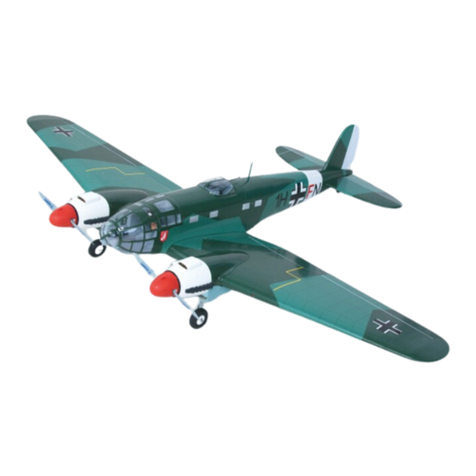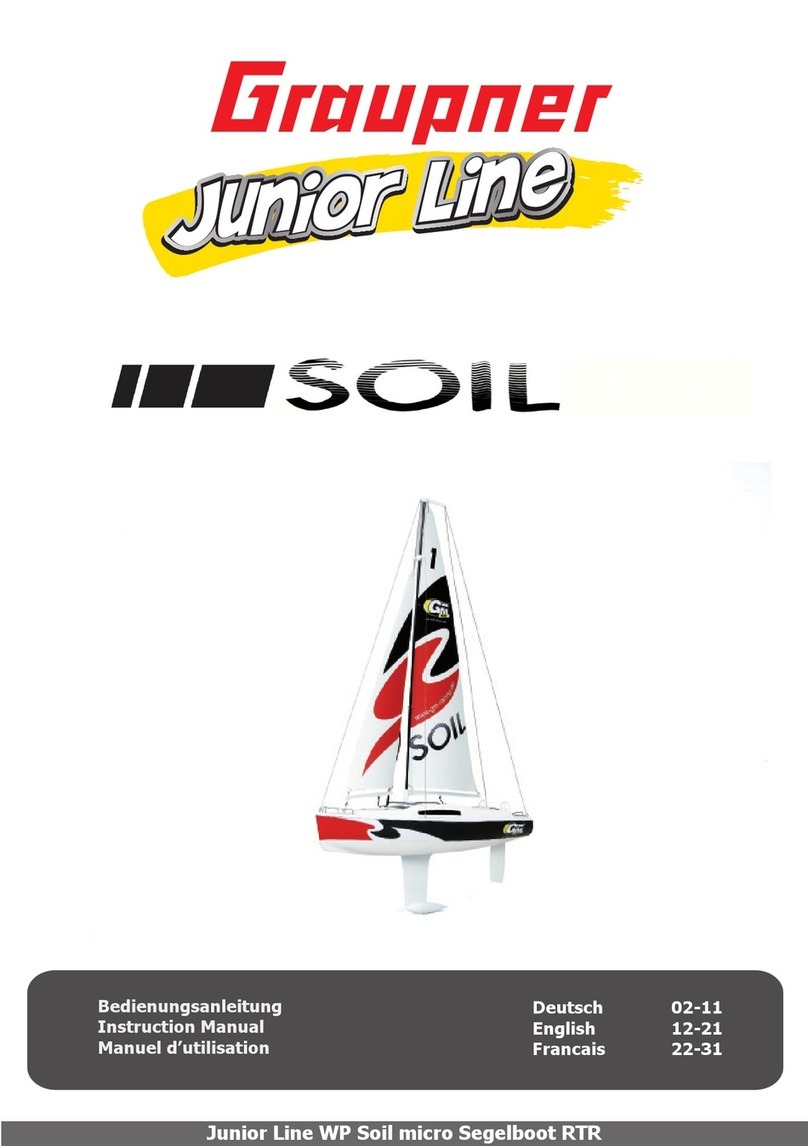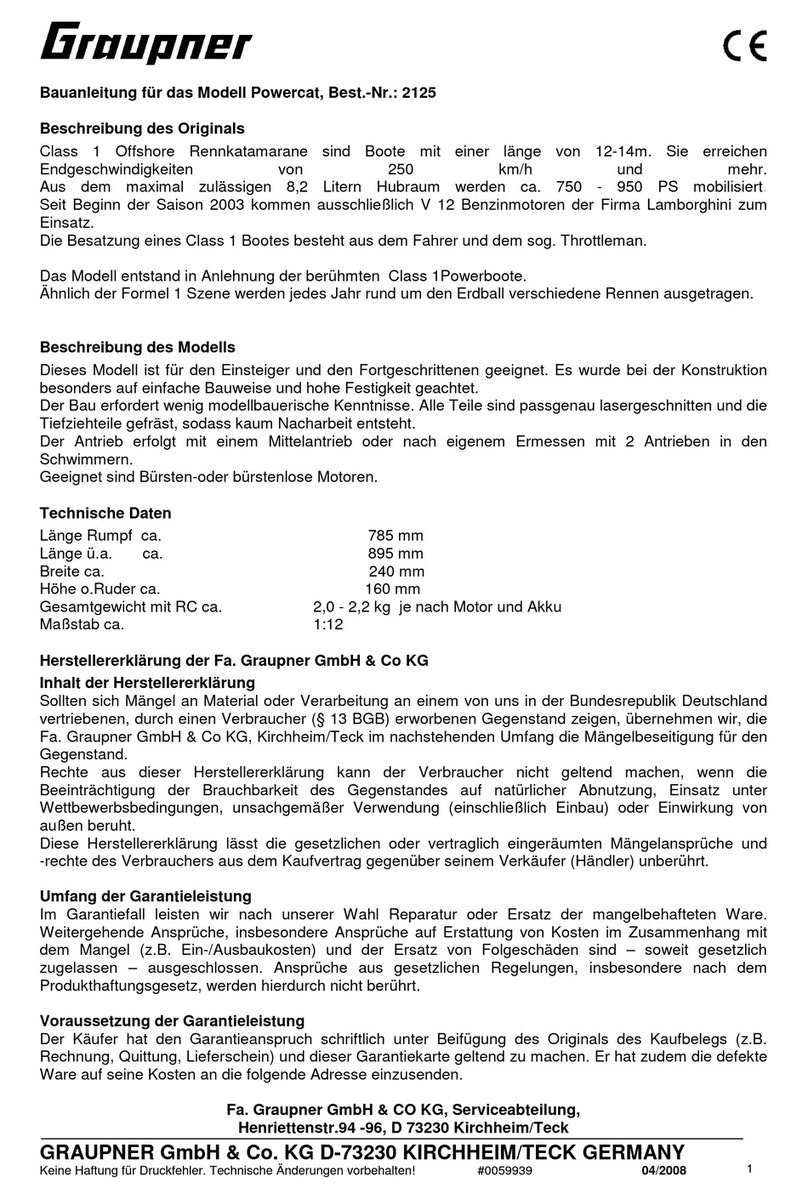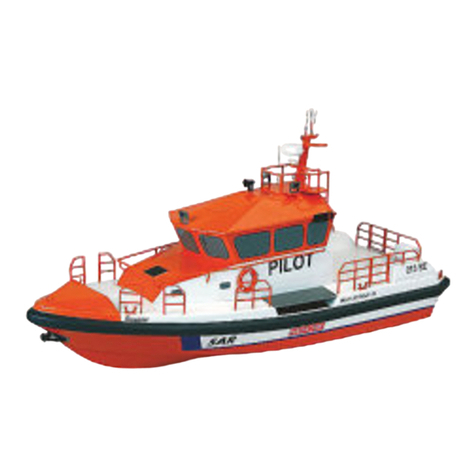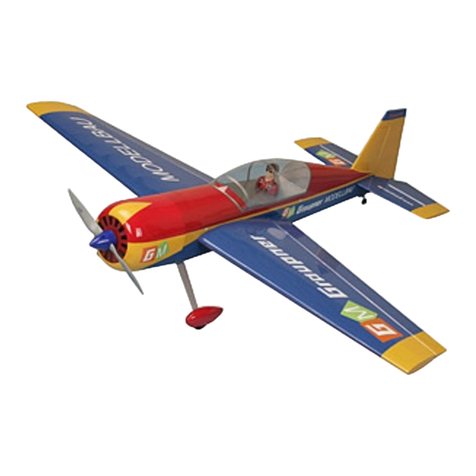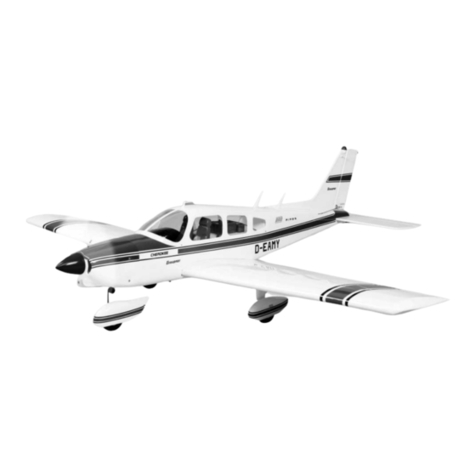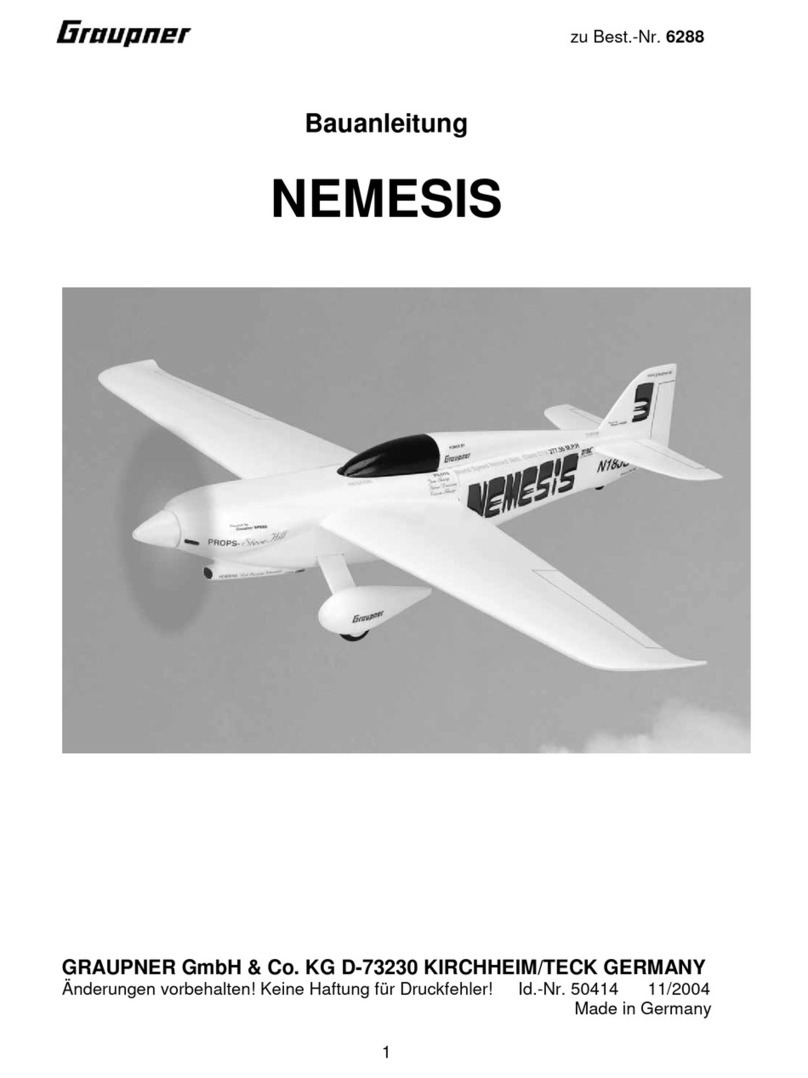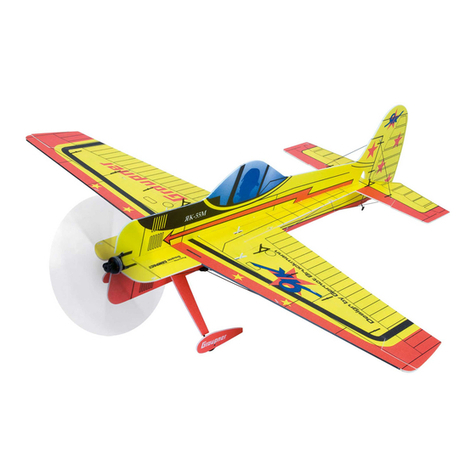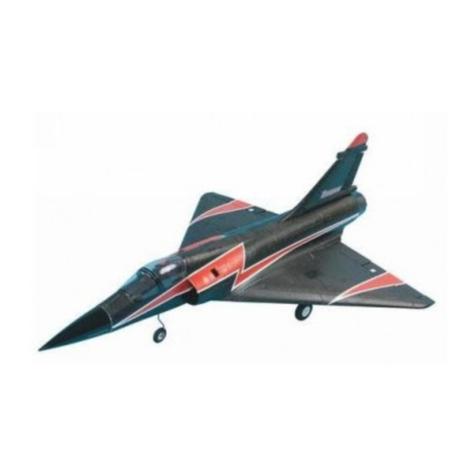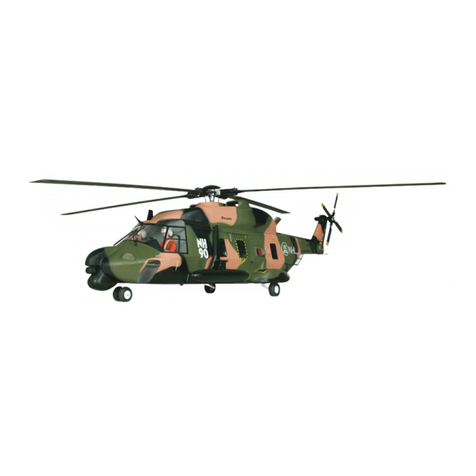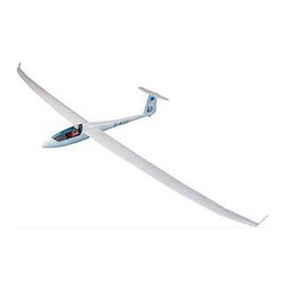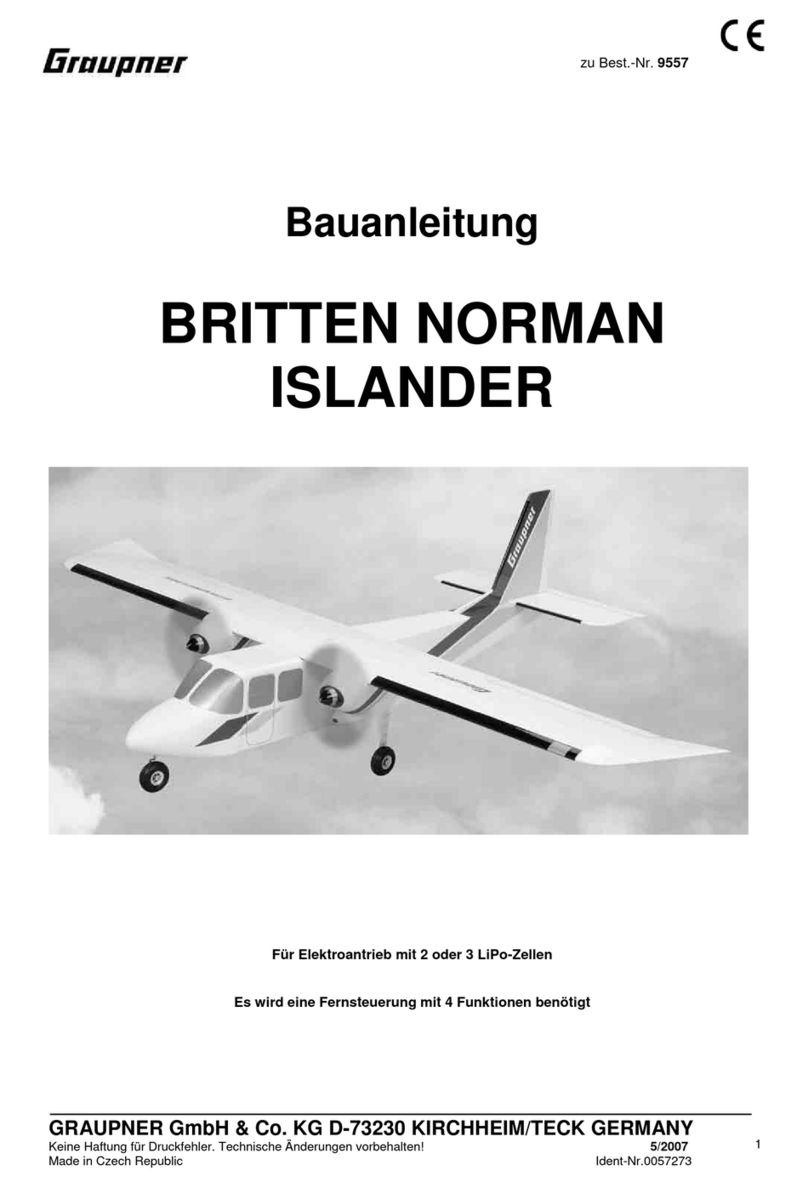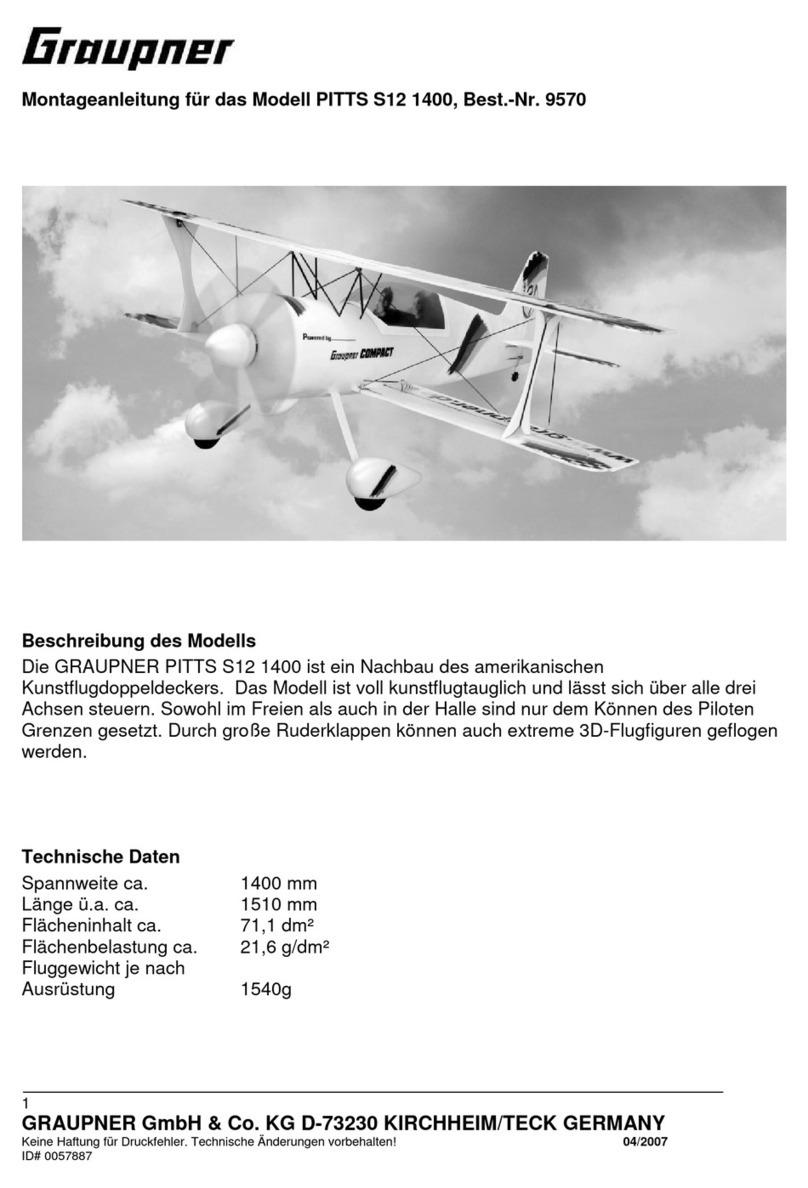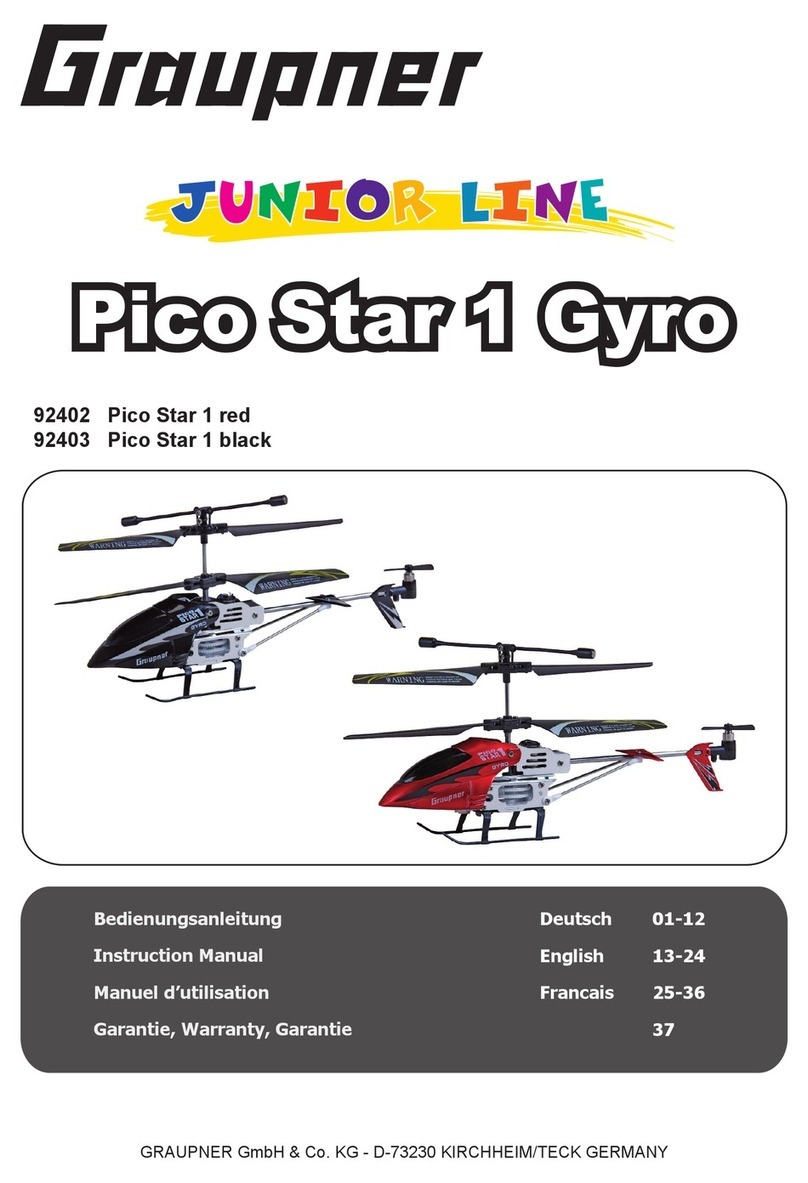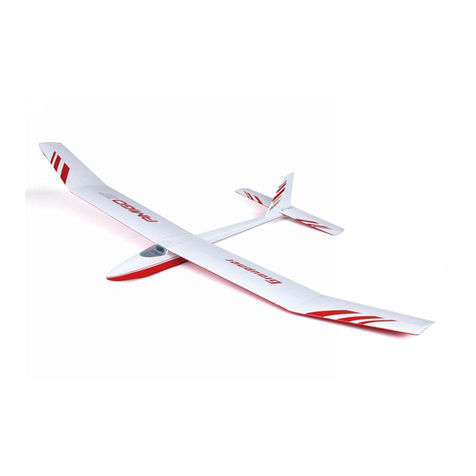GRAUPNER/SJ GmbH D-73230 KIRCHHEIM/TECK GERMANY
Modifications reserved. No liability for printing errors. 05/2013
8
Safety notes
Caution: cyano-acrylate adhesive must never be allowed to contact any part of your body, and your eyes
in particular. For this reason we recommend the use of gloves and goggles when handling these
materials. The workshop should be effectively ventilated. Store the adhesive out of the reach of children.
It is a legal requirement to obtain third-party insurance before you operate any model aircraft.
Before attempting to operate the model for the first time it is essential to read right through the assembly
and operating instructions attentively. You alone are responsible for the safe operation of your RC model
aircraft. Young persons must be supervised by a responsible adult who is aware of the possible hazards
involved in the operation of model aeroplanes.
In legal terms our models are classed as aircraft, and as such are subject to legal regulations and
restrictions which must be observed at all times.
Avoid short-circuits at all times. The high energy density of the batteries used in modelling involves a
constant risk of explosion and fire.
A radio-controlled model aircraft can only work properly and fulfil your expectations if it is built very
carefully, and in accordance with the building instructions. Cautious and carefully considered action is
essential in order to avoid personal injury and / or property damage. Nobody would climb into a full-size
sailplane and try to fly it without first completing a course of training. Model flying is just such a skill, and
has to be learned in exactly the same way.
However, as manufacturers we have no means of influencing the way you build and operate your RC
model aircraft, and for this reason we can do no more than point out the hazards expressly. We accept no
further liability.
If you need help, please enlist the aid of an experienced modeller, join a model club or enrol at a model
flying training school. Model shops and the specialist model press are also good sources of information.
The best course is always to join a club and fly at the approved model flying site.
Adhesives contain substances which can be harmful to health under certain circumstances. It is therefore
important to read and observe the notes and warnings supplied by the glue manufacturer.
The operator must be in full possession of his bodily and mental capabilities. As with car driving, it is not
permissible to fly a model aircraft under the influence of alcohol or drugs.
Make sure that all passers-by and onlookers are aware of the hazards involved in the operation of your
model. Remind spectators to keep a safe distance from the model.
Always maintain a safe distance between your model and other people or objects. Never fly low over
people or directly towards them.
Radio-controlled models should only be flown in “normal” weather conditions, i.e. a temperature range of
-5°to +35°C. More extreme temperatures can lead to changes in battery capacity, material characteristics,
the strength of glued joints and other unwanted effects.
All model flyers should behave in a way which minimises the danger to people and property. Never act in
any manner which will disturb other pilots, or have an adverse effect on safe, orderly flying at the site.
Don’t operate your model aeroplane in the vicinity of overhead power cables, industrial sites, residential
areas, public roads, school playgrounds or sports fields etc.
Pre-flight checks
Check that the radio control system works correctly and at full range before every flight: switch on the
transmitter and receiving system, and ensure that all the control surfaces work smoothly, and deflect in
the correct “sense” in relation to the stick movements.
If you are a beginner to this type of model flying, we recommend that you enlist an experienced model
pilot to help you check and test-fly the model.
Please don’t ignore our warnings. They refer to hazardous materials and processes which, if ignored, can
result in fatal injury or serious damage to property.
If you are to fly your model safely and avoid problems, it is essential that you are aware of its position
and attitude throughout each flight - so don’t let it fly too far away. If you detect a control problem or
interference during a flight, immediately land the model to prevent a potential accident. Model aeroplanes
must always give way to full-size aircraft. Take-off and landing strips should be kept free of people and
other obstacles.
Your RC system can only work reliably if the batteries are kept fully charged.
